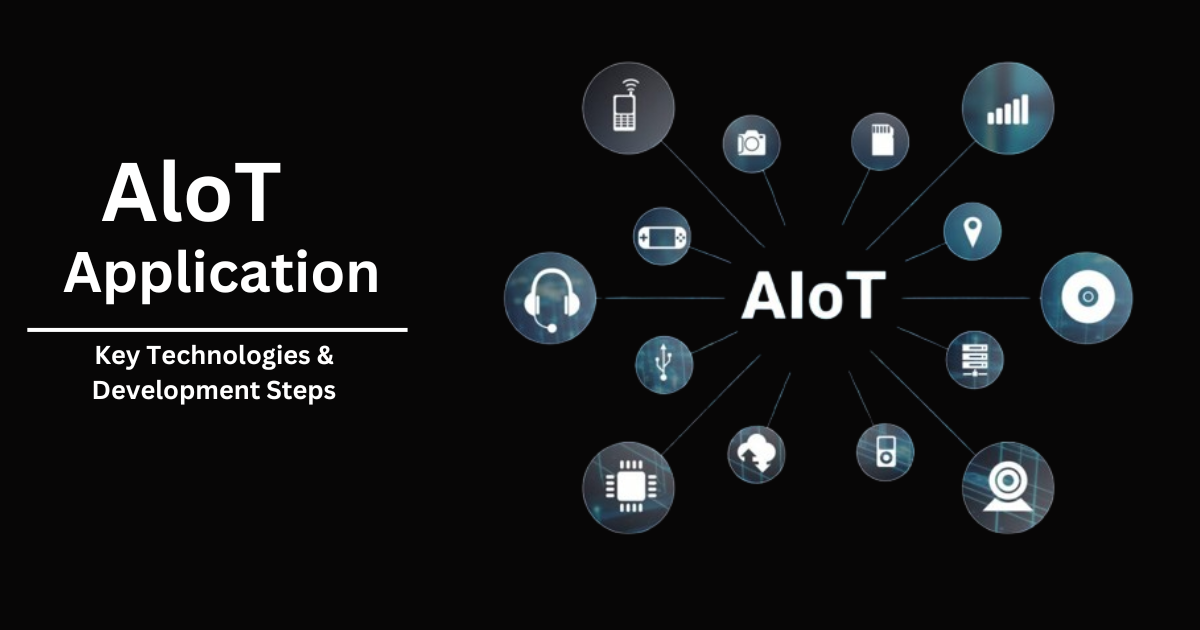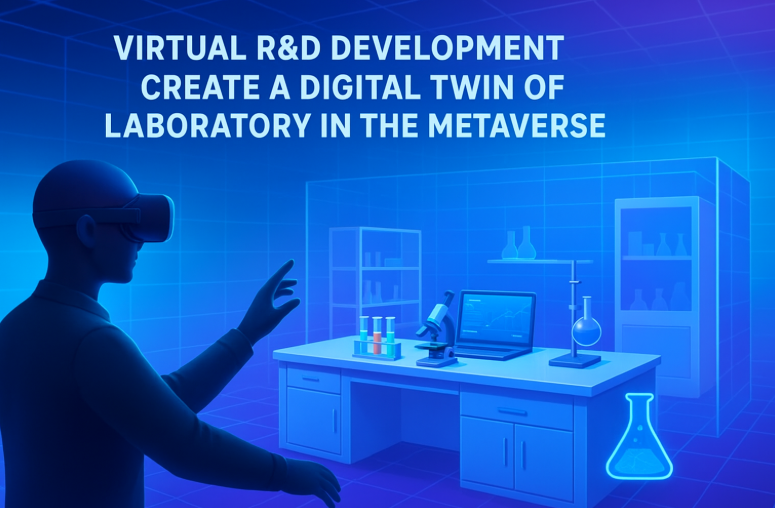Artificial Intelligence of Things is a modern era in which AI and the Internet of Things are evolving to create more innovative and responsive applications and systems. The integration of AIoT includes adding AI skills to the gadgets of IoT, thus allowing them to collect data, study it, make correct selections, and optimize their operations without human intervention.
Key components of AIoT
IoT devices contain sensors, software, and connectivity that collect and transmit data. This includes devices in homes, wearables, industrial sensors, and equipment that monitors the environment.
- Artificial Intelligence: AI algorithms analyze the data collected from IoT devices to establish patterns, predict data, and make room for automation. Essential techniques include machine learning development and deep learning to improve the intelligence of applications based on IoT.
- Data Connectivity: Sharing and communicating live data would be the foundation of making IoT connect to the Internet and each other, thereby opening the door for much more intelligent responses and interactions.
Benefits of AIoT App Development
AIoT application development offer
- Improved decision-making: AIoT applications may glance over vast chunks of data in real-time and yield insights toward actionable decisions.
- This aspect of increased automation employs AI, allowing IoT devices to develop their capabilities and provide their services through autonomic responses to variations or inputs from the user environment without human intervention.
- The application of AIoT enhances the processes running in many domains—these domains run on smart manufacturing, healthcare, and operational cost savings while enhancing resource use.
- AIoT can help consumer applications personalize experiences according to user preferences and behaviours, improving customer satisfaction and engagement.
Application Areas
AIoT is transforming various industries, as shown in the subsequent sections.
- Smart Homes: Technologies like smart thermostats, security cameras, and home assistants use machine learning to understand your preferences and optimize energy consumption and security.
- Healthcare: Devices such as wearable devices and remote monitoring systems analyze health data to provide proactive patient care and detect health issues early.
- Industrial Automation: AIoT enables predictive maintenance, quality control, and optimized supply chains in industrial settings.
- Smart Cities: AI with IoT integrating urban infrastructure to make it more competent at handling traffic flow, waste management, and public safety.
What Are the Features of AIOT?
AIoT combines artificial intelligence and the Internet of Things, creating more intelligent and autonomous systems. The key features are given below:
1. Real-time Data Processing
AIoT systems process data in real-time for instant analysis and decision-making. This will be vital if someone needs an immediate response in intelligent manufacturing, monitoring in healthcare facilities, and other applications.
2. Predictive Analytics
The machine learning algorithms applied in AIoT can find patterns in historical data and predict future outputs. Their applications will be found in predictive maintenance, for example. In smart industry settings, they can know beforehand possible failures to occur.
3. Self-Autonomous Decision
An AIoT device may decide without man’s intervention. For example, in smart thermostats, temperature adjustment may be based on the user’s habits of changing at specific times or raising the temperature when using the air conditioner.
4. Hyper Automation
The presence of AI enables the automation of many tasks, thus making the system less dependent on human control. This feature is widely used in smart home systems, industrial automation, and supply chain management.
5. Adaptive Learning
The AIoT system learns from the user’s ongoing interactions with his environment and continuously enhances performance and accuracy. This feature enhances the quality of the user experience through personalized services tailored to individual preferences.
6. Interoperability
AIoT solutions enable integration with any other device or platform so that any system that creates these smart environments will suit the given needs.
7. Securing Through Advanced Measures
AI can enhance security since data is monitored for anomalies and threats, enabling proactive handling of safeguards against sensitive information. AI-driven security features improve the process of authenticating devices and encrypting data.
8. Scalability
AIoT is optimized for scalability: It can handle many devices and volumes of growing data without a corresponding decline in performance.
9. User-Centered Interfaces
Most AIoT applications provide user-friendly self-monitoring, control, and device interaction interfaces. Voice commands and mobile applications are two standard methods for interacting with AIoT solutions.
10. Energy Efficiency
AI algorithms can optimize energy consumption by modeling usage patterns and adjusting how these devices operate, contributing to the fight for sustainability.
11. Remote Monitoring and Control
AIoT devices allow users to monitor and manage systems remotely through mobile applications or web interfaces, improving convenience and access.
Steps To Develop AIOT App –
Develop an AIoT (Artificial Intelligence of Things) application with a step-by-step approach that integrates IoT devices with AI capabilities. Here is the step-by-step guide:
1. Determine Objectives and Use Cases
Identify Problems: Try to understand the challenges or needs the application will target.
Develop Use Cases: Document detailed scenarios of how the users will engage with your application and the expected results.
2. Choose IoT Devices and Sensors
Hardware selection: Identify the IoT devices and sensors capturing the desired data.
Compatibility: The devices shall be compatible with the AI framework.
3. Data Collection and Management
Information Gathering: Provide means for extracting data from the selected IoT devices.
Data Storage Solutions: Proper, appropriate storage solutions, like cloud or edge computing, are needed to manage and secure the data collected.
4.AI Model Development
Preparing Data: Prepare the data for analysis.
Select Appropriate AI Algorithms: Select the appropriate machine learning and deep learning models based on your use case.
Training the Model: This is where you train your AI model with historical data to identify patterns and make appropriate predictions based on its future behavior.
5. Interconnection of AI with IoT
Real-Time Processing: Design systems to analyze real-time data and provide a response
Provide autonomy over decision-making to devices with algorithms so that a decision can be made with data from the algorithm’s analysis.
6. User Interface Design
Dashboards to be created -graphical intuitive displays of the data and system performance
Develop Mobile/Web Apps Applications- intuitive user interfaces that allow the AIoT system to be accessed from anywhere in the world
7. Incorporate Security Measures
Data Protection: Use encryption and secure authentication to safeguard data in motion and rest
Privacy Compliance: Adhere to applicable data protection laws and regulations in the application
8. Testing and Validation
Prototyping testing -prototypes created, developed, and tested to verify functionality.
User Acceptance Testing (UAT): Gather data from the actual users to fine-tune the application.
9. Deployment and Monitoring
Roll-out Plan: Roll out in a phased manner, with minimal disruptions but ensuring the first review has been gathered
Performance Monitoring: Monitor continuously how the application will perform and how the user interacts
10. Ongoing Maintenance and Updates
Maintenance: System continuity should be ensured through routine updates and patching security
Feedback Integration: Gather continuous data for enhancements and updates
11. Scalability Planning
Design for Growth: The application’s architecture must be scalable enough to support the presence of more devices and data.
Future Innovations: Stay current with AI and IoT innovations and integrate them into the application as soon as possible.
Conclusion!
Every connected device can perform real-time data analytics and autonomous decisions independently in every area of activity, resulting in greater operational efficiency. As technological advancements advance, AIoT devices will transform the roadmap of connectivity and promote innovation for numerous industries. Their applicability and realization of efficiency, quality user experience, and development of smarter and sustainable solutions make them pertinent to the contemporary digital world.
In the future, AIoT will be developed to improve user interaction with the world, making life more connected and efficient. Further questions or inquiries regarding the content can be directed to Suffescom’s development team.



